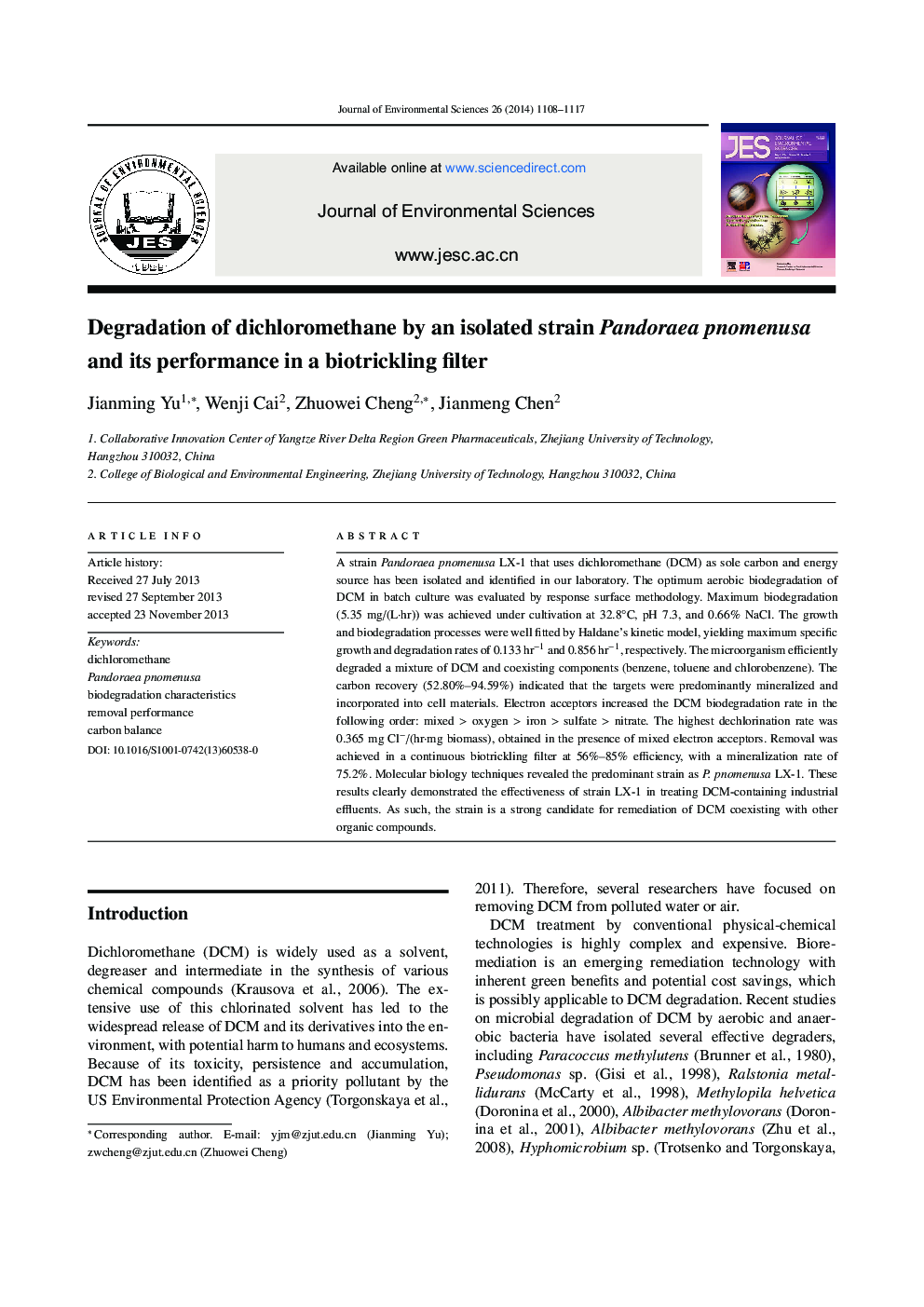| Article ID | Journal | Published Year | Pages | File Type |
|---|---|---|---|---|
| 4454149 | Journal of Environmental Sciences | 2014 | 10 Pages |
A strain Pandoraea pnomenusa LX-1 that uses dichloromethane (DCM) as sole carbon and energy source has been isolated and identified in our laboratory. The optimum aerobic biodegradation of DCM in batch culture was evaluated by response surface methodology. Maximum biodegradation (5.35 mg/(L·hr)) was achieved under cultivation at 32.8°C, pH 7.3, and 0.66% NaCl. The growth and biodegradation processes were well fitted by Haldane's kinetic model, yielding maximum specific growth and degradation rates of 0.133 hr−1 and 0.856 hr−1, respectively. The microorganism efficiently degraded a mixture of DCM and coexisting components (benzene, toluene and chlorobenzene). The carbon recovery (52.80%–94.59%) indicated that the targets were predominantly mineralized and incorporated into cell materials. Electron acceptors increased the DCM biodegradation rate in the following order: mixed > oxygen > iron > sulfate > nitrate. The highest dechlorination rate was 0.365 mg Cl−/(hr·mg biomass), obtained in the presence of mixed electron acceptors. Removal was achieved in a continuous biotrickling filter at 56%–85% efficiency, with a mineralization rate of 75.2%. Molecular biology techniques revealed the predominant strain as P. pnomenusa LX-1. These results clearly demonstrated the effectiveness of strain LX-1 in treating DCM-containing industrial effluents. As such, the strain is a strong candidate for remediation of DCM coexisting with other organic compounds.
